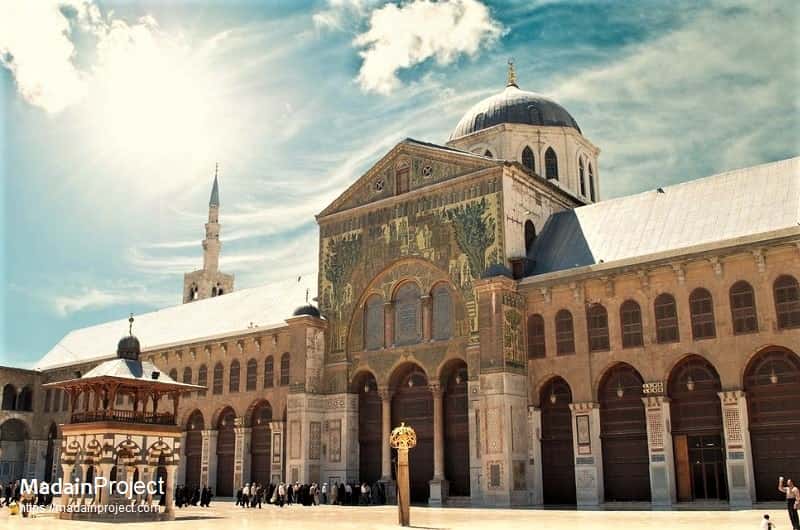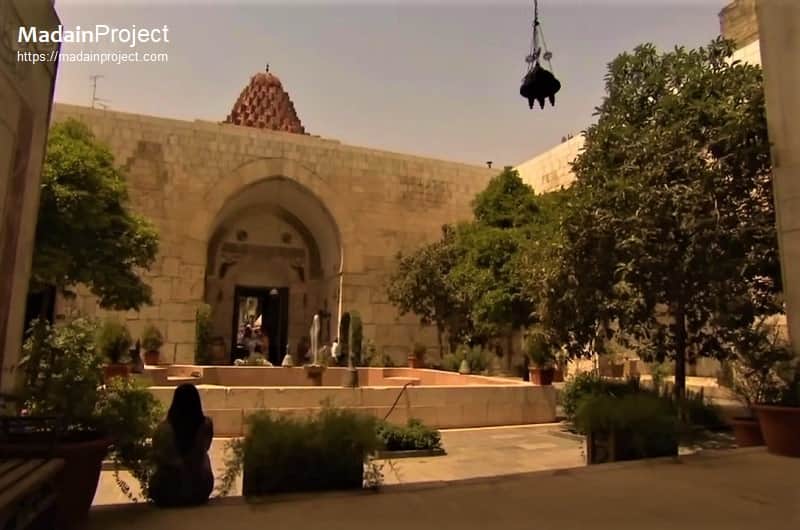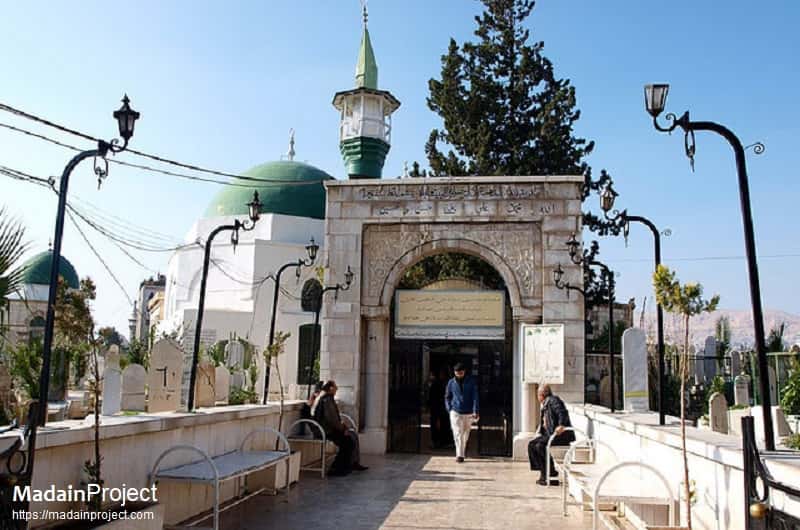Ancient Damascus (دمشق) is the capital of Syria, colloquially known in Syria as aš-Šām (الشام) and titled the "City of Jasmine" (مدينة الياسمين). First settled in the second millennium BCE, it was chosen as the capital of the Umayyad Caliphate from 661 to 750. After the victory of the Abbasid dynasty, the seat of Islamic power was moved to Baghdad.
Damascus, one of the oldest continuously inhabited cities in the world, boasts a rich and multifaceted history that spans millennia. Situated in present-day Syria, Damascus occupies a strategic location on the eastern foothills of the Anti-Lebanon mountain range, nestled between the Barada and Awaj rivers. This advantageous geographic position facilitated its development into a pivotal center for trade and cultural exchange throughout the ancient Near East.
The city's origins trace back to the third millennium BCE, making it one of the oldest continuously inhabited cities globally. Early settlements in the area were associated with the ancient culture of Ebla, and Damascus emerged as a significant urban center by the second millennium BCE, mentioned in ancient Egyptian texts and the Bible. In the first millennium BCE, Damascus fell under the rule of various powers, including the Arameans, Assyrians, and Babylonians, before becoming part of the Persian Empire under Cyrus the Great in the 6th century BCE.
During the Hellenistic period following Alexander the Great's conquests, Damascus experienced Greek cultural influence but retained its Semitic and Aramean roots. In 64 BCE, Damascus was incorporated into the Roman Empire under Pompey the Great after his conquest of the region. Roman rule brought prosperity and urban development, including the construction of roads, temples, and civic buildings, marking Damascus as a vital hub in the Roman province of Syria.
In the seventh century CE, Damascus was conquered by the Arab Muslim armies during the Islamic expansion. Under the Umayyad Caliphate, Damascus flourished as the capital of the Islamic world from 661 to 750 CE. The Umayyads established impressive architectural projects, such as the Umayyad Mosque (also known as the Great Mosque of Damascus), which remains a revered landmark and a symbol of the city's Islamic heritage.
Throughout the subsequent centuries, Damascus continued to play a prominent role in the Islamic world, serving as a center for trade, scholarship, and culture. It weathered numerous dynastic changes, including periods of Seljuk, Ayyubid, and Mamluk rule. In the early 16th century, Damascus came under Ottoman control, marking a new chapter in its history as part of the Ottoman Empire until the early 20th century.
In modern times, Damascus has faced challenges, including political upheavals and conflicts. However, its historical significance and cultural heritage remain resilient, attracting visitors and scholars alike to explore its ancient streets, archaeological sites, and diverse cultural tapestry that reflects its storied past as one of the world's oldest continuously inhabited cities.

Located in the heart of the Old City of Damascus, the mosque's site has a deep historical legacy, originally serving as a temple dedicated to Hadad in ancient Aramaean times, which later became the Roman Temple of Jupiter and subsequently the Christian Cathedral of Saint John. The mosque's impressive structure and rich history make it a key site for understanding the religious and cultural evolution of Damascus. It is one of the oldest and largest mosques in the world. Constructed between 705 and 715 under the Umayyad Caliph al-Walid I. Read more

The Temple of Jupiter in Damascus, originally dedicated to the ancient Aramaean god Hadad, is a significant archaeological and historical site that reflects the city's rich and diverse religious heritage. Reconstructed by the Romans in the first century BC as the Temple of Jupiter Damascenus, it became a central landmark in Roman Syria, showcasing the grandeur of Roman religious and architectural influence. Over the centuries, this site has undergone numerous transformations, later becoming the Christian Cathedral of Saint John before evolving into the Umayyad Mosque. Read more

The Nur al-Din Bimaristan, founded by the Zengid ruler Nur al-Din in the 12th century, stands as a remarkable example of medieval Islamic hospital architecture in Damascus. This bimaristan, or hospital, not only served as a medical facility but also as a center for medical education and innovation. Its establishment marked a significant development in the history of Islamic medicine, emphasizing the importance of healthcare and medical knowledge in medieval Muslim societies. The Nur al-Din Bimaristan is renowned for its architectural elegance, including intricately designed courtyards and patient rooms. Read more

The Tomb of Salah al-Din Ayyubi, located in Damascus, is the final resting place of the renowned Muslim military leader and founder of the Ayyubid dynasty, Salah al-Din (Saladin). Celebrated for his role in the Crusades, particularly his victory at the Battle of Hattin and subsequent recapture of Jerusalem, Salah al-Din is a revered figure in Islamic history. His tomb, situated near the Umayyad Mosque, is a modest yet profoundly significant monument, symbolizing his enduring legacy and the respect he commands across the Muslim world. Read more

The Madrasa al-Nuriyya al-Kubra, established in the 12th century by the Zengid ruler Nur al-Din, is an important educational institution in the history of Damascus. This madrasa, or Islamic school, was part of Nur al-Din’s broader efforts to promote Islamic education and scholarship. It played a crucial role in the intellectual and religious life of the city, serving as a center for the study of Islamic jurisprudence, theology, and sciences. The madrasa’s architectural design, featuring a central courtyard surrounded by lecture halls and student accommodations, exemplifies the traditional layout of Islamic educational institutions. Read more
By the time of Ibn Shatir (fourteenth century CE), the mosque had long been a center of learning and scientific inquiry in the Islamic world The sundial is the oldest polar-axis sundial still in existence. Ibn al-Shatir also invented a timekeeping device called "ṣandūq al-yawāqīt" (jewel box), which incorporates both a universal sundial and a magnetic compass. He invented it for the purpose of finding the times of prayers. The idea of using hours of equal time length throughout the year was the innovation of Ibn al-Shatir in 1371 CE, based on earlier developments in trigonometry by al-Battānī who was also a notable astronomer, astrologer and mathematician.

The Damascus Citadel, a prominent fortress located in the northwest corner of the Old City, stands as a testament to the city’s strategic and military significance throughout history. With origins dating back to the Roman era, the citadel underwent extensive modifications and expansions under successive Islamic dynasties, including the Umayyads, Abbasids, and Ayyubids. It served as a military stronghold and administrative center, reflecting the architectural and defensive advancements of the time. Read more

Bab al-Saghir Cemetery, one of the oldest and most significant cemeteries in Damascus, is a sacred burial ground with a rich historical and religious heritage. Located near the southern gate of the Old City, it is the final resting place of numerous notable Islamic figures, including Companions of the Prophet Muhammad, scholars, and saints. The cemetery's graves and mausoleums, some adorned with intricate inscriptions and designs, reflect the deep reverence and respect accorded to those buried here. Read more

The Tomb of Abu Huraira, situated in Damascus, commemorates one of the most prominent Companions of the Prophet Muhammad. Abu Huraira is renowned for his extensive narration of hadiths, making significant contributions to Islamic tradition and scholarship. His final resting place in Damascus reflects the city's historical role as a center of Islamic learning and devotion. The tomb attracts visitors and devotees who seek to honor his memory and learn more about his life. Read more
The historic Damascus Gate of Jerusalem built during the reign of Ottoman Sultan Suleiman, known in Arabic as the Bab al-Amud (Gate of the Column), is one of the main entrances to the Old City of Jerusalem. In modern Hebrew it has been named as the Sha'ar Shechem (Shechem Gate), after the biblical city of Shechem. At one time a road leaving Damascus Gate of Jerusalem led to the ancient city of Damascus, Syria via Sichem. Historically the gate was also known as the Bab al-'Amud (gate of the column), referring to the Hadrian's column built in the first half of the scond century CE. It is the only gate of Jerusalem to have preserved the same name since at least the tenth century (i.e. Bab al-Amud).
Throughout its history, the Damascus Gate has been more than just a military fortification. It has served as a bustling center of commerce and social interaction. The gate leads to the vibrant Arab market (souq) in the Muslim Quarter, where vendors sell a variety of goods, from fresh produce to textiles and souvenirs. This market atmosphere reflects the gate's historical role as a key entry point for caravans and traders coming from the north, including the cities of Nablus (Shechem) and Damascus, hence its name.

Qasr al-Azem, a splendid 18th-century CE palace in the heart of Damascus, exemplifies the opulent residential architecture of Ottoman Syria. Originally built as the residence of the Ottoman governor As'ad Pasha al-Azem, the palace showcases intricate architectural details, including elaborately decorated courtyards, reception halls, and private quarters. Qasr al-Azem reflects the luxurious lifestyle and refined tastes of the Ottoman elite, as well as the architectural and artistic influences that shaped Damascus during this period. Read more

The Maqam Abi Darda, located in Damascus, is a revered shrine dedicated to Abu Darda, a prominent Companion of the Prophet Muhammad and an esteemed Islamic scholar. Known for his wisdom and piety, Abu Darda played a crucial role in the early spread of Islam and the establishment of Islamic teachings. The maqam, or shrine, serves as a place of pilgrimage and reflection. Read more
Signup for our monthly newsletter / online magazine.
No spam, we promise.